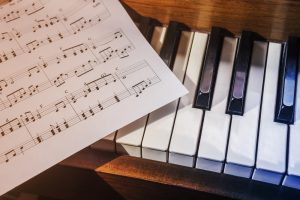Table of Contents
Come join us now, and enjoy playing your beloved music and browse through great scores of every level and styles!
Can’t find the songbook you’re looking for? Please, email us at: sheetmusiclibrarypdf@gmail.com We’d like to help you!
Sorabji: In the Hothouse (from Two Piano Pieces) sheet music, Noten, partitura, spartiti 楽譜

Best Sheet Music download from our Library.
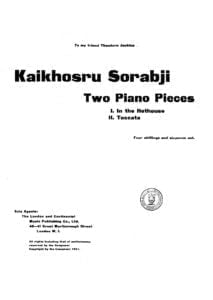
Please, subscribe to our Library.
If you are already a subscriber, please, check our NEW SCORES’ page every month for new sheet music. THANK YOU!
Browse in the Library:
Or browse in the categories menus & download the Library Catalog PDF:
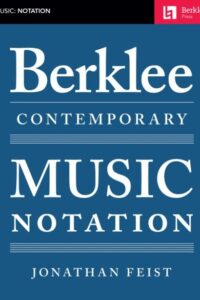
Who was Sorabji?
Kaikhosru Shapurji Sorabji: The Hermit of Modernist Maximalism
In the often-crowded pantheon of 20th-century composers, Kaikhosru Shapurji Sorabji (1892-1988) occupies a unique and enigmatic niche. A composer of staggering ambition, labyrinthine complexity, and self-imposed isolation, Sorabji crafted some of the most monumental, technically demanding, and stylistically idiosyncratic music ever conceived. His work, largely ignored during his lifetime and still challenging audiences today, represents a singular path through modernism – one defined by maximalism, intricate ornamentation, transcendental virtuosity, and a fierce, almost hermetic, independence.

Biography: A Self-Forged Identity
- Birth & Heritage: Born Leon Dudley Sorabji on August 14, 1892, in Chingford, Essex, England. His father was a Parsi engineer from India (thus the Persian-derived name Sorabji), and his mother was English-Spanish. This mixed heritage profoundly shaped his sense of identity, though he felt alienated from both cultures.
- The Name: Around 1914, he legally changed his name to Kaikhosru Shapurji Sorabji. “Kaikhosru” and “Shapurji” were Persian names chosen for their resonance and connection to ancient Persian history and Zoroastrianism, reflecting his deliberate construction of a unique persona.
- Musical Formation: Largely self-taught. He received some piano lessons in his youth but had no formal composition training. His musical education came through voracious listening, score study (especially Bach, Liszt, Busoni, Debussy, Ravel, Scriabin, Szymanowski, Medtner), and wide reading in literature, philosophy, and the occult.
- Early Career & Criticism: Worked as a music critic (under the pseudonym “S. Godfrey”) for outlets like The New Age and The New English Weekly from the 1910s to the 1930s. His critiques were famously acerbic, insightful, and often scathing, particularly targeting English musical provincialism and composers he deemed mediocre (which was most of them).
- The Recluse: Deeply disillusioned by the musical establishment and critical reception to his early performances (which were rare and often controversial), Sorabji gradually withdrew from public musical life starting in the late 1930s. After his mother’s death in 1940, he retreated almost completely to his secluded home “The Eye” in Corfe Castle, Dorset, where he lived with his companion, Reginald Norman Best, until his death. He forbade performances of his music for decades.
- The Ban Lifted: In 1976, pressured by a growing underground interest spearheaded by pianists like Yonty Solomon and Alistair Hinton (who later became his literary executor), Sorabji reluctantly lifted the ban on performances, provided he approved the performer.
- Death: Sorabji died on October 15, 1988, in Winfrith Newburgh, Dorset, leaving behind a colossal legacy of unpublished manuscripts.
Works: Monuments of Sound

Sorabji’s output is vast and overwhelmingly dominated by solo piano music, though he also composed orchestral works, chamber music, organ symphonies, and songs. His works are renowned for their extreme length, density, and technical difficulty, pushing the boundaries of playability.
- Key Masterpieces:
- Opus Clavicembalisticum (1930): His most famous (or infamous) work. A colossal 4+ hour piano epic in 12 movements (including fugues, passacaglias, toccatas, cadenzas), often considered one of the most challenging solo piano works ever written. A summit of contrapuntal complexity and virtuosic display.
- Symphonic Variations for Piano (1935-37): Another monumental work, exploring vast variation forms over an extended duration.
- Sequentia Cyclica super “Dies iræ” ex Missa pro Defunctis (1948-49): A massive cycle of 27 variations on the “Dies Irae” chant, demonstrating his intricate contrapuntal and transformative skills.
- 100 Transcendental Studies (1940-44): True to their name, these studies explore extreme technical and expressive demands far beyond those of Liszt or Chopin.
- Symphonies for Solo Piano: Several exist, including his Symphony No. 2 (“Jāmī”), blending orchestral textures and scope onto the piano.
- Gulistān – Nocturne for Piano (1940): A prime example of his lush, perfumed, and incredibly intricate “Persian”-inspired style.
- Concerti: He wrote several for solo piano and orchestra (e.g., Concerto per suonare da me solo e senza orchestra, per divertirsi), which are symphonic in scale and require superhuman virtuosity.
- Symphonies for Organ: Vast, complex works exploring the sonic possibilities of the instrument.
Analysis of Style: A Universe of Complexity
Sorabji’s style is instantly recognizable yet difficult to categorize. It synthesizes diverse elements into a unique and overwhelming whole:
- Maximalism: This is the defining characteristic. Sorabji embraced extremes:
- Length: Works lasting several hours are common.
- Density: Highly polyphonic textures, often with multiple independent melodic lines woven together in complex counterpoint (influenced by Bach, Busoni).
- Virtuosity: Demands transcendental technique – cascades of notes, complex polyrhythms, wide leaps, immense power, and extreme delicacy. He wrote as if the pianist had four hands.
- Ornamentation: Baroque-like ornamentation (trills, mordents, turns, grace notes) is ubiquitous, often layered and integral to the texture, creating shimmering, kaleidoscopic surfaces (influenced by Scriabin, Szymanowski, Middle Eastern/Persian music).
- Dynamic Range: From barely audible whispers to thunderous, percussive climaxes.
- Harmony: A complex fusion:
- Rooted in late-Romantic chromaticism (Scriabin, Szymanowski, early Schoenberg).
- Freely employed dissonance, clusters, and intricate chord structures.
- Often retained a sense of tonal centers or polarity, even amidst dense chromaticism (unlike strict atonality).
- Incorporated modal inflections, sometimes evoking Persian or Spanish flavors.
- Rhythm: Highly complex and fluid:
- Frequent use of polyrhythms (multiple simultaneous rhythms), cross-rhythms, and nested tuplets (triplets within quintuplets, etc.).
- Tempo often fluctuates wildly, requiring immense control.
- A sense of improvisatory freedom within highly structured forms.
- Form: Often large-scale, complex, and idiosyncratic:
- Favored variations (passacaglias, chaconnes), fugues, toccatas, and intricate multi-movement structures (like the Opus Clavicembalisticum).
- Forms were often expansive and cumulative, building through layered repetition and intensification rather than traditional development.
- Architecture was paramount, even in the densest textures.
- Influences (Assimilated, Not Imitated):
- Ferruccio Busoni: The most profound influence. Busoni’s ideas of “Young Classicism,” the transcendental potential of the piano, the fusion of Bachian counterpoint with modern harmony, and the concept of “Junge Klassizität” resonated deeply. Sorabji dedicated his Opus Clavicembalisticum to Busoni’s memory.
- Franz Liszt: Virtuosity, thematic transformation, large-scale forms, and the symphonic poem concept translated to piano.
- J.S. Bach: Contrapuntal mastery, structural rigor, and the use of forms like fugue and passacaglia.
- Alexander Scriabin: Mysticism, harmonic language, dense textures, and ecstatic climaxes.
- Karol Szymanowski: Sensuous harmony, intricate ornamentation (especially in the “Persian” inspired works like Métopes and Masques), and voluptuous textures.
- Debussy & Ravel: Color, texture, exoticism, and pianistic refinement.
- Mediterranean & Persian Cultures: While not authentically recreating these styles, he evoked their essence through ornamentation, melodic turns, and titles (Gulistān, Jāmī), reflecting his fascination with his Persian heritage and the wider Orient.
- Aesthetic: Sorabji’s music aimed for:
- Transcendence: Pushing beyond perceived limits of instrument, performer, and listener.
- Luxuriance & Opulence: A rich, sensual, almost decadent sound world.
- Intellectual Rigor: Underlying the sensual surface was meticulous structural planning.
- Individualism: A complete rejection of prevailing trends (serialism, neoclassicism, minimalism) in favor of his own uncompromising vision.
Legacy: From Obscurity to Cult Status
Sorabji’s legacy is complex and evolving:
- Decades of Neglect: His self-imposed exile and performance ban meant his music was virtually unknown outside a tiny circle for nearly 40 years. Manuscripts were inaccessible, unplayable, and unpublished.
- The Pioneers (1970s-): The lifting of the ban sparked interest. Pianists like Yonty Solomon, Michael Habermann, Geoffrey Douglas Madge (who made the first complete recording of Opus Clavicembalisticum in 1977), and later Marc-André Hamelin, Jonathan Powell, Fredrik Ullén, and Ronald Stevenson began the monumental task of learning, performing, and recording his works. This required immense dedication and technical prowess.
- Publication & Scholarship: The Sorabji Archive, established by Alistair Hinton (Sorabji’s literary executor), has been crucial in cataloging, editing, and facilitating the publication of scores (primarily by Dover Publications and The Sorabji Music Archive). Scholarly work is gradually increasing.
- Recordings Renaissance: The CD era and digital distribution (YouTube, streaming) have been transformative. Dedicated labels (Altarus, BIS, Toccata Classics, Piano Classics) have released numerous recordings, making this once-inaccessible music available globally. Complete cycles of the 100 Studies and other major works are underway.
- The Cult & The Challenge: Sorabji remains a “composer’s composer” and a cult figure. His music is not mainstream concert fare due to its extreme demands and duration. However, it commands deep respect and fascination among pianists, composers, and listeners drawn to its unique sound world and uncompromising vision. He is seen as the ultimate iconoclast, forging a path utterly independent of 20th-century musical fashions.
- Influence: His direct influence on other composers is hard to pinpoint due to his obscurity, but he stands as a powerful symbol of uncompromising artistic integrity and the exploration of extreme complexity and virtuosity. Composers interested in maximalism, intricate counterpoint, or pushing pianistic limits inevitably encounter his shadow.
- Copyright Controversy: The complex copyright status of his works (involving the Sorabji Archive and publishers) has sometimes been a point of friction within the community of performers and scholars seeking access.
Sorabji: The Solitary Giant
Kaikhosru Shapurji Sorabji was a true original. He inhabited a musical universe entirely of his own making, synthesizing diverse influences into a style characterized by unparalleled complexity, sensuous opulence, and transcendental ambition. His deliberate withdrawal from the world ensured decades of obscurity, but the dedication of pioneering performers and the power of recording technology have brought his extraordinary soundscapes to light. While his music remains challenging and demanding, it offers unparalleled rewards: a journey into a world of labyrinthine beauty, overwhelming power, and intellectual fascination. Sorabji stands as a testament to the power of an utterly individual artistic vision, uncompromising in its scope and ambition, a solitary giant whose monumental creations continue to challenge and inspire. He redefined the possible for the piano and left a legacy that continues to unfold as more performers dare to scale his musical Himalayas.
“In the Hothouse” is one of Sorabji’s most evocative and frequently performed works, serving as a perfect entry point into his dense, sensuous sound world. Here’s a detailed look at this fascinating piece:
Context: Two Piano Pieces (1918)
- Composed: 1918 (early in Sorabji’s career, age 26).
- Publication: First published in 1920, making it one of the earliest Sorabji works available in print.
- The Pair: “In the Hothouse” is paired with “Toccata” – a contrasting, hyper-virtuosic, and structurally complex piece showing his Busoni/Liszt influences. “In the Hothouse” offers the sensual, atmospheric counterpoint.
- Significance: Represents Sorabji’s early mastery of texture, harmony, and evocative atmosphere. It predates his gargantuan works but already displays his unique voice.
“In the Hothouse”: A Sensory Immersion
- Title & Imagery: The title instantly conjures an environment: humid, lush, teeming with exotic, overripe plant life, heavy perfumes, and stifling, enclosed heat. Sorabji translates this sensory overload into sound.
- Form & Structure: Relatively free and rhapsodic. It unfolds as a continuous, organic stream of consciousness rather than adhering to strict classical forms. Think of it as an elaborate, decadent arabesque.
- Style & Character:
- Extreme Sensuality: This is the defining feature. The music drips with lush, complex harmonies and suffocatingly rich textures.
- Harmony: Deeply chromatic, rooted in late Scriabin and early Szymanowski. Expect dense, constantly shifting chords: augmented harmonies, whole-tone inflections, unresolved dissonances creating tension, and sudden moments of surprising consonance like shafts of light piercing foliage. It avoids traditional tonality but gravitates around implied centers.
- Texture: Thick, layered, and constantly in motion. Tremolos, trills, rapid filigree (ornamental passages), and cascading arpeggios create a shimmering, humid haze. Melodies are often embedded within this dense undergrowth rather than standing clearly apart. The writing often requires the pianist to sustain multiple layers simultaneously.
- Rhythm: Fluid and flexible, often obscured by the sheer density of notes and ornamentation. Rubato (expressive tempo fluctuations) is essential. While less overtly complex polyrhythmically than his later works, the rhythmic flow feels organic and improvisatory.
- Dynamics & Articulation: Wide dynamic range, often shifting suddenly between extremes (e.g., thunderous climaxes collapsing into fragile whispers). Articulation varies from sharp staccatos to legatissimo passages that blur together. Pedaling is crucial for sustaining the harmonic haze and creating resonance.
- Ornamentation: Quintessential early Sorabji. Trills, mordents, turns, and grace notes are not mere decoration; they are the texture, creating constant flickering movement and contributing to the claustrophobic, teeming atmosphere. This foreshadows the intricate ornamentation dominating his mature style.
- Emotional Landscape: Evokes opulence, decadence, languor, mystery, stifling heat, hidden dangers, and overwhelming sensory stimulation. There’s a sense of beauty bordering on the grotesque due to its sheer intensity.
Influences Audible in “In the Hothouse”
- Scriabin (Primary): The harmonic language (mystic chords, unresolved dissonance, ecstatic climaxes), the sensual atmosphere, and the use of trills/tremolos are deeply indebted to Scriabin’s late sonatas and poems (e.g., Vers la flamme). Sorabji pushes Scriabin’s decadence further.
- Szymanowski: The opulent textures, perfumed harmonies, and “orientalist” exoticism (though abstracted here) strongly recall Szymanowski’s “Métopes” or “Masques,” which Sorabji admired deeply.
- Debussy: The focus on atmosphere, texture, and harmonic color (whole-tone scales, parallel chords) shows Debussy’s influence, though rendered with far greater density and intensity.
- Ravel: The virtuosic filigree and lush harmonies (think “Gaspard de la Nuit,” especially “Ondine” or “Le gibet”) are a touchstone, again amplified.
- Liszt: The rhapsodic freedom and dramatic gestures hint at Liszt, though filtered through a post-Scriabinesque lens.
Performance Challenges
- Texture & Balance: Maintaining clarity amidst the dense, rapidly shifting textures is paramount. The pianist must carefully voice chords and layers to prevent muddiness while sustaining the essential harmonic haze.
- Ornamentation as Texture: Executing the constant ornamentation smoothly and evenly, integrating it into the melodic and harmonic flow rather than treating it as mere decoration.
- Dynamic Control: Navigating the extreme dynamic contrasts and sudden shifts without sounding jarring. Creating a true pianissimo shimmer within complexity is incredibly difficult.
- Rubato & Phrasing: Applying expressive tempo fluctuations naturally while maintaining the overall structural coherence and forward momentum of the rhapsodic form.
- Pedaling: Using the pedal to create resonance and blend without causing harmonic blurring or loss of rhythmic definition. Requires exceptional sensitivity.
- Stamina & Focus: While shorter than his later works (typically 12-15 minutes), the piece demands intense concentration and physical control to sustain the atmosphere and navigate the technical intricacies.
Legacy & Significance of “In the Hothouse”
- Accessibility: It remains one of Sorabji’s most “accessible” works due to its evocative title, relatively shorter duration, and concentrated expression. It’s a frequent choice for pianists introducing audiences to Sorabji.
- Blueprint: It serves as a crucial blueprint for Sorabji’s mature style, showcasing his core preoccupations: sensuality, harmonic density, intricate ornamentation as texture, and atmospheric evocation, all present in embryonic form.
- Performance History: Despite Sorabji’s later ban, “In the Hothouse” (along with the Toccata) was one of the few pieces occasionally performed during his lifetime (e.g., by Sorabji himself and pianist Reginald Paul) and became a key work for the pioneering generation post-1976 (Yonty Solomon, Michael Habermann, Marc-André Hamelin, Jonathan Powell, Fredrik Ullén).
- Gateway Piece: It functions as a vital “gateway drug” into Sorabji’s world. Its success in conveying its intense atmosphere often encourages listeners to explore his more monumental, complex works.
- Standalone Masterpiece: Regardless of its role as an introduction, it stands as a perfectly formed and powerful piece of early modernist piano writing, a miniature tone poem of extraordinary evocative power.
“In the Hothouse” is a sun-drenched, overripe, and intoxicating immersion into Sorabji’s unique aesthetic. It captures the essence of his sensual maximalism in a concentrated dose, showcasing his debt to Scriabin and Szymanowski while asserting his own distinct voice. Its evocative power, technical brilliance, and relative brevity ensure its enduring place as one of his most beloved and frequently performed works, offering a compelling glimpse into the hothouse of Sorabji’s extraordinary musical imagination.
| Artist or Composer / Score name | Cover | List of Contents |
|---|---|---|
| Guitar Play Along Vol. 18 – Acoustic Rock – pdf + audio MP3 tracks with Tablature |
 |
Guitar Play Along Vol. 18 – Acoustic Rock – pdf + audio MP3 tracks |
| Guitar Play Along Vol. 5 – Modern Rock – pdf + audio MP3 tracks with Tablature |
 |
Guitar Play Along Vol. 5 – Modern Rock – pdf + audio MP3 tracks |
| Guitar Play Along Vol. 6 – 90s Rock – pdf + audio MP3 tracks with Tablature |
 |
Guitar Play Along Vol. 6 – 90s Rock – pdf + audio MP3 tracks |
| Guitar Play Along – Chart Hits – ( PDF with MP3 audio tracks Guitar Tab Songbook) |
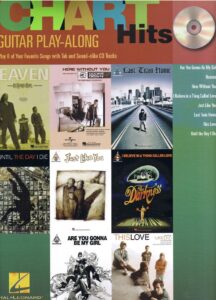 |
Guitar Play Along – Chart Hits – ( PDF with MP3 audio tracks Guitar Tab Songbook) |
| Guitar Play Along (Easy) Classic Rock Hits Book with Audio MP3 Embedded Tracks With Tablature |
 |
Guitar Play Along (Easy) Classic Rock Hits Book with Audio MP3 Embedded Tracks With Tablature |
| Guitar Play Along Deluxe Vol 08 – Ozzy Osbourne Book + Embedded Audio Mp3 Tracks To Play Along |
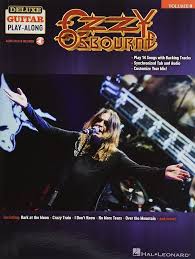 |
Guitar Play Along Deluxe Vol 08 – Ozzy Osbourne Book + Embedded Audio Mp3 Tracks To Play Along |
| Guitar Play Along Deluxe Vol. 1 Top Rock Hits Tablature with embedded MP3 audio tracks |
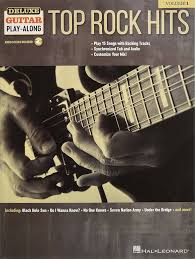 |
Guitar Play Along Deluxe Vol. 1 Top Rock Hits Tablature with embedded MP3 audio tracks |
| Guitar Play Along Deluxe Vol. 14 Bob Seger Tablature Book With Online Code To MP3 Audio Tracks |
 |
Guitar Play Along Deluxe Vol. 14 Bob Seger Tablature Book With Online Code To MP3 Audio Tracks |
| Guitar Play Along Deluxe Vol. 15 Metal Anthology With Tablature Book + Embedded Audio Mp3 Tracks To Play Along |
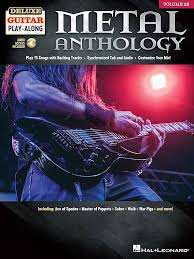 |
Guitar Play Along Deluxe Vol. 15 Metal Anthology With Tablature Book + Embedded Audio Mp3 Tracks To Play Along |
| Guitar Play Along Deluxe Vol. 16 The Who book with Audio MP3 Embedded Tracks With Tablature |
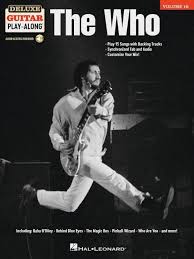 |
Guitar Play Along Deluxe Vol. 16 The Who book with Audio MP3 Embedded Tracks With Tablature |
| Guitar Play Along Deluxe Vol. 2 Really Easy Songs Tablature (Book) |
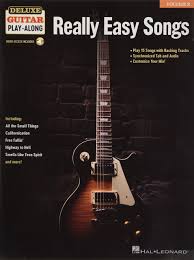 |
Guitar Play Along Deluxe Vol. 2 Really Easy Songs Tablature Book With Online Code To MP3 Audio Tracks |
| Guitar Play Along Deluxe Vol. 21 Neil Young book with Audio MP3 Embedded Tracks With Tablature |
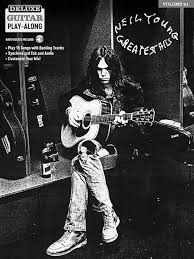 |
Guitar Play Along Deluxe Vol. 21 Neil Young book with Audio MP3 Embedded Tracks With Tablature |
| Guitar Play Along Deluxe Vol. 23 Creedence Clearwater Revival book with Audio MP3 Embedded Tracks With Tablature |
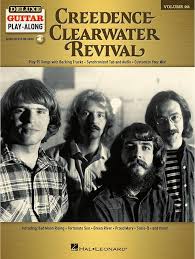 |
Guitar Play Along Deluxe Vol. 23 Creedence Clearwater Revival book with Audio MP3 Embedded Tracks With Tablature |
| Guitar Play Along Deluxe Vol. 24 Jimi Hendrix book with Audio MP3 Embedded Tracks With Tablature |
 |
Guitar Play Along Deluxe Vol. 24 Jimi Hendrix book with Audio MP3 Embedded Tracks With Tablature |
| Guitar Play Along Deluxe Vol. 25 The Doors book with Audio MP3 Embedded Tracks With Tablature |
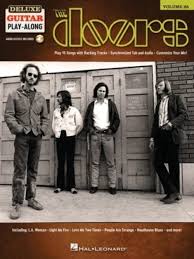 |
Guitar Play Along Deluxe Vol. 25 The Doors book with Audio MP3 Embedded Tracks With Tablature |
| Guitar Play Along Deluxe Vol. 27 Stevie Ray Vaughan book with Audio MP3 Embedded Tracks With Tablature |
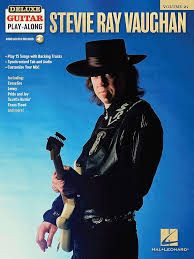 |
Guitar Play Along Deluxe Vol. 27 Stevie Ray Vaughan book with Audio MP3 Embedded Tracks With Tablature |
| Guitar Play Along Deluxe Vol. 3 Acoustic Songs Tablature (Book) |
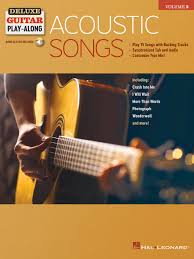 |
Guitar Play Along Deluxe Vol. 3 Acoustic Songs Tablature Book With Online Code To MP3 Audio Tracks |
| Guitar Play Along Deluxe Vol. 4 The Beatles Tablature (Book) |
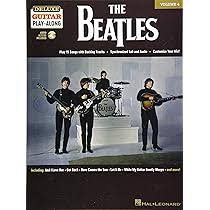 |
Guitar Play Along Deluxe Vol. 4 The Beatles Tablature Book With Online Code To MP3 Audio Tracks |
| Guitar Play Along Deluxe Vol. 5 Blues Standards Tablature Book With Online Code To MP3 Audio Tracks |
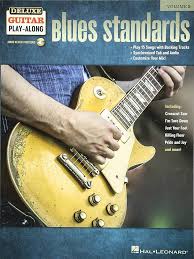 |
Guitar Play Along Deluxe Vol. 5 Blues Standards Tablature Book With Online Code To MP3 Audio Tracks |
| Guitar Play Along Deluxe Vol. 6 Red Hot Chili Peppers Tablature Book With Online Code To MP3 Audio Tracks |
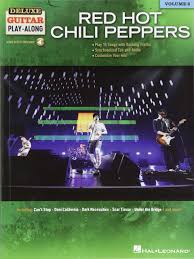 |
Guitar Play Along Deluxe Vol. 6 Red Hot Chili Peppers Tablature Book With Online Code To MP3 Audio Tracks |
| Guitar Play Along Deluxe Vol. 7 Classic Rock Tablature (Book) |
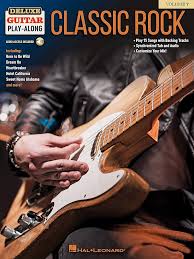 |
Guitar Play Along Deluxe Vol. 7 Classic Rock Tablature Book With Online Code To MP3 Audio Tracks |
| Guitar Play Along Deluxe Vol. 9 Ed Sheeran Tablature Book With Online Code To Mp3 Audio Tracks |
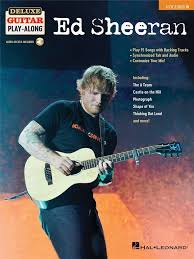 |
Guitar Play Along Deluxe Vol. 9 Ed Sheeran Tablature Book With Online Code To Mp3 Audio Tracks |
| Guitar Play Along Vol 123 Lennon and McCartney Acoustic Book + Audio Mp3 Tracks To Play Along |
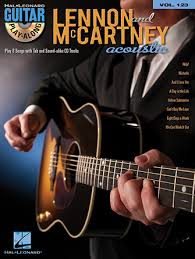 |
Guitar Play Along Vol 123 Lennon and McCartney Acoustic Book + Embedded Audio Mp3 Tracks To Play Along |
| Guitar Play Along Vol 127 1970s Rock Book + Embedded Audio Mp3 Tracks To Play Along |
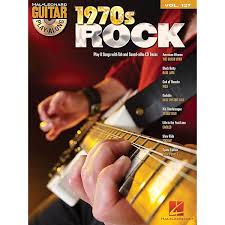 |
Guitar Play Along Vol 127 1970s Rock Book + Embedded Audio Mp3 Tracks To Play Along |
| Guitar Play Along Vol 128 Rock 1960s Book + Embedded Audio Mp3 Tracks To Play Along |
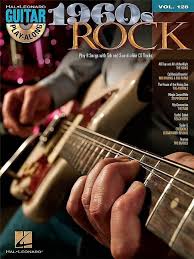 |
Guitar Play Along Vol 128 Rock 1960s Book + Embedded Audio Mp3 Tracks To Play Along |
| Guitar Play Along Vol 130 Iron Maiden Book + Embedded Audio Mp3 Tracks To Play Along |
 |
Guitar Play Along Vol 130 Iron Maiden Book + Embedded Audio Mp3 Tracks To Play Along |
| Guitar Play Along Vol 131 1990s Rock Book + Embedded Audio Mp3 Tracks To Play Along |
 |
Guitar Play Along Vol 131 1990s Rock Book + Embedded Audio Mp3 Tracks To Play Along |
| Guitar Play Along Vol 133 Taylor Swift Book + Embedded Audio Mp3 Tracks To Play Along |
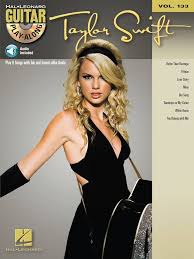 |
Guitar Play Along Vol 133 Taylor Swift Book + Embedded Audio Mp3 Tracks To Play Along |
| Guitar Play Along Vol 137 Irish Tunes Book + Embedded Audio Mp3 Tracks To Play Along |
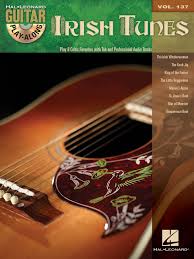 |
Guitar Play Along Vol 137 Irish Tunes Book + Embedded Audio Mp3 Tracks To Play Along |
| Guitar Play Along Vol 144 Django Reinhardt with Tablature Book + MP3 Audio Play Along (embedded) |
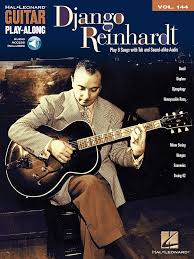 |
Guitar Play Along Vol 144 Django Reinhardt with Tablature Book + MP3 Audio Play Along (embedded) |
| Guitar Play Along Vol 146 Robert Johnson with Tablature Book + MP3 Audio Play Along (embedded) |
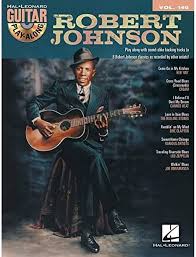 |
Guitar Play Along Vol 146 Robert Johnson with Tablature Book + MP3 Audio Play Along (embedded) |
| Guitar Play Along Vol 147 Simon Garfunkel with Tablature Book + MP3 Audio Play Along (embedded) |
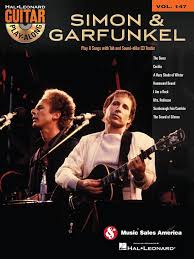 |
Guitar Play Along Vol 147 Simon Garfunkel with Tablature Book + MP3 Audio Play Along (embedded) |
| Guitar Play Along Vol 148 Bob Dylan with Tablature Book + MP3 Audio Play Along (embedded) |
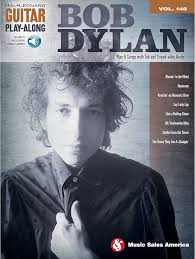 |
Guitar Play Along Vol 148 Bob Dylan with Tablature Book + MP3 Audio Play Along (embedded) |
| Guitar Play Along Vol 151 Bach, J. S. with Tablature Book + MP3 Audio Play Along (embedded) |
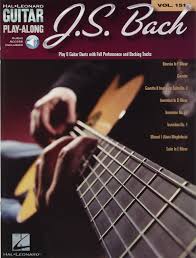 |
Guitar Play Along Vol 151 Bach, J. S. with Tablature Book + MP3 Audio Play Along (embedded) |
| Guitar Play Along Vol 155 Eric Clapton Unplugged with Tablature Book + MP3 Audio Play Along (embedded) |
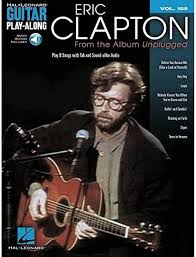 |
Guitar Play Along Vol 155 Eric Clapton Unplugged with Tablature Book + MP3 Audio Play Along (embedded) |
| Guitar Play Along Vol 162 Eagles Hits with Tablature Book + MP3 Audio Play Along (embedded) |
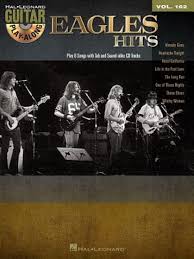 |
Guitar Play Along Vol 162 Eagles Hits with Tablature Book + MP3 Audio Play Along (embedded) |
| Guitar Play Along Vol 165 Green Day |
 |
Guitar Play Along Vol 165 Green Day |
| Guitar Play Along Vol 166 Modern Blues with Tablature Book + MP3 Audio Play Along (embedded) |
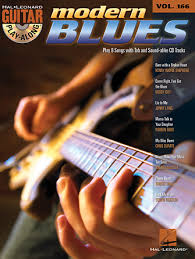 |
Guitar Play Along Vol 166 Modern Blues with Tablature Book + MP3 Audio Play Along (embedded) |
| Guitar Play Along Vol 188 Mötley Crüe with Tablature Book + MP3 Audio Play Along (embedded) |
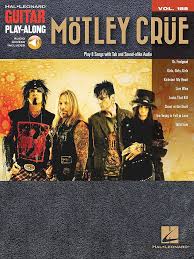 |
Guitar Play Along Vol 188 Mötley Crüe with Tablature Book + MP3 Audio Play Along (embedded) |
| Guitar Play Along Vol 33 Acoustic Classics (with Audio Mp3 Tracks Play Along) with TABLATURE |
 |
Guitar Play Along Vol 33 Acoustic Classics (with Audio Mp3 Tracks Play Along) |
| Guitar Play Along Vol 80 – Guitar Acoustic Anthology with Tablature |
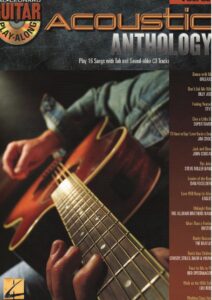 |
Guitar Play-Along Vol 80 – Acoustic Anthology (Hal Leonard) |
| Guitar Play Along Vol. 101 Songs For Beginners Book with Audio MP3 Embedded Tracks With Tablature |
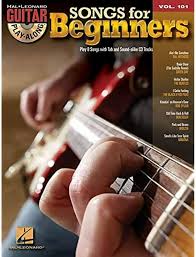 |
Guitar Play Along Vol. 101 Songs For Beginners Book with Audio MP3 Embedded Tracks With Tablature |
| Guitar Play Along Vol. 102 Classic Punk Book with Audio MP3 Embedded Tracks With Tablature |
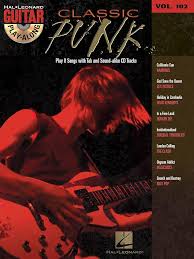 |
Guitar Play Along Vol. 102 Classic Punk Book with Audio MP3 Embedded Tracks With Tablature |
| Guitar Play Along Vol. 104 Duane Allman Book with Audio MP3 Embedded Tracks With Tablature |
 |
Guitar Play Along Vol. 104 Duane Allman Book with Audio MP3 Embedded Tracks With Tablature |
| Guitar Play Along Vol. 105 Latin Book with Audio MP3 Embedded Tracks With Tablature |
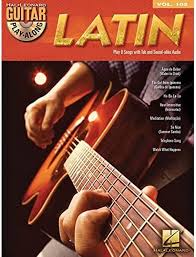 |
Guitar Play Along Vol. 105 Latin Book with Audio MP3 Embedded Tracks With Tablature |
| Guitar Play Along Vol. 109 Steve Miller Book with Audio MP3 Embedded Tracks With Tablature |
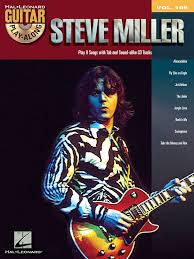 |
Guitar Play Along Vol. 109 Steve Miller Book with Audio MP3 Embedded Tracks With Tablature |
| Guitar Play Along Vol. 112 Queen Book with Audio MP3 Embedded Tracks With Tablature |
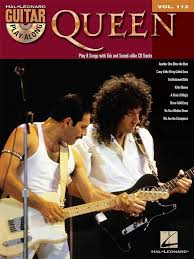 |
Guitar Play Along Vol. 112 Queen Book with Audio MP3 Embedded Tracks With Tablature |
| Guitar Play Along Vol. 113 Jim Croce Book with Audio MP3 Embedded Tracks With Tablature |
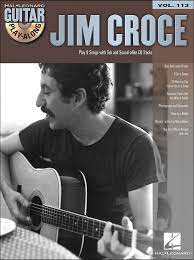 |
Guitar Play Along Vol. 113 Jim Croce Book with Audio MP3 Embedded Tracks With Tablature |
| Guitar Play Along Vol. 115 Johnny Cash Book with Audio MP3 Embedded Tracks With Tablature |
 |
Johnny Cash Johnny Cash Guitar Play Along Vol 115 with Tablature |
| Guitar Play Along Vol. 116 The Ventures Book with Audio MP3 Embedded Tracks With Tablature |
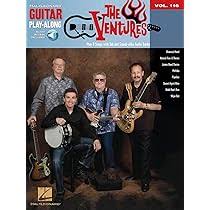 |
Guitar Play Along Vol. 116 The Ventures Book with Audio MP3 Embedded Tracks With Tablature |
| Guitar Play Along Vol. 117 Brad Paisley Book with Audio MP3 Embedded Tracks With Tablature |
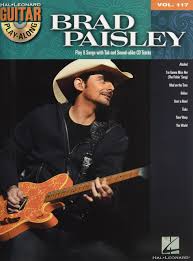 |
Guitar Play Along Vol. 117 Brad Paisley Book with Audio MP3 Embedded Tracks With Tablature |
| Guitar Play Along Vol. 118 Eric Johnson Book with Audio MP3 Embedded Tracks With Tablature |
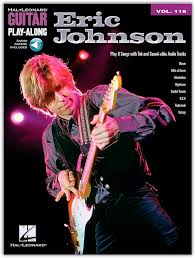 |
Guitar Play Along Vol. 118 Eric Johnson Book with Audio MP3 Embedded Tracks With Tablature |
| Guitar Play Along Vol. 119 AC DC Hits Book with Audio MP3 Embedded Tracks With Tablature |
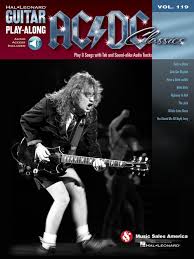 |
Guitar Play Along Vol. 119 AC DC Hits Book with Audio MP3 Embedded Tracks With Tablature |
| Guitar Play Along Vol. 120 Progressive Rock Book with Audio MP3 Embedded Tracks With Tablature |
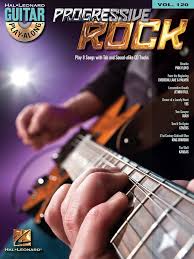 |
Guitar Play Along Vol. 120 Progressive Rock Book with Audio MP3 Embedded Tracks With Tablature |
| Guitar Play Along Vol. 122 Crosby Stills And Nash Book with Audio MP3 Embedded Tracks With Tablature |
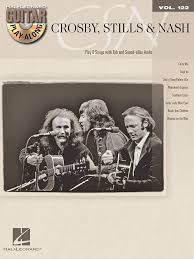 |
Guitar Play Along Vol. 122 Crosby Stills And Nash Book with Audio MP3 Embedded Tracks With Tablature |
| Guitar Play Along Vol. 124 Smooth Jazz Book with Audio MP3 Embedded Tracks With Tablature |
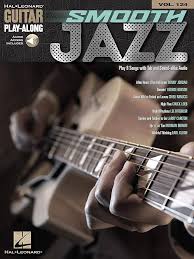 |
Guitar Play Along Vol. 124 Smooth Jazz Book with Audio MP3 Embedded Tracks With Tablature |
| Guitar Play Along Vol. 125 Jeff Beck Book with Audio MP3 Embedded Tracks With Tablature |
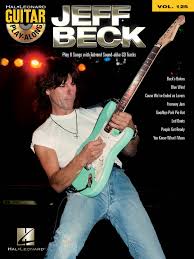 |
Guitar Play Along Vol. 125 Jeff Beck Book with Audio MP3 Embedded Tracks With Tablature |
| Guitar Play Along Vol. 126 Bob Marley Book with Audio MP3 Embedded Tracks With Tablature |
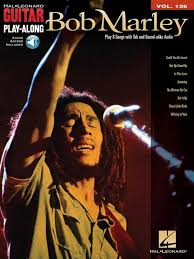 |
Guitar Play Along Vol. 126 Bob Marley Book with Audio MP3 Embedded Tracks With Tablature |
| Guitar Play Along Vol. 14 – Blues Rock – pdf + audio MP3 tracks with Tablature |
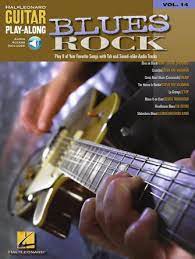 |
Guitar Play Along Vol. 14 – Blues Rock – pdf + audio MP3 tracks |
| Guitar Play Along Vol. 149 AC DC Hits Book with Audio MP3 Embedded Tracks With Tablature |
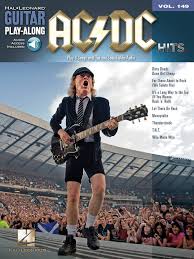 |
Guitar Play Along Vol. 149 AC DC Hits Book with Audio MP3 Embedded Tracks With Tablature |
| Guitar Play Along Vol. 152 Joe Bonamassa book with Audio MP3 Embedded Tracks With Tablature |
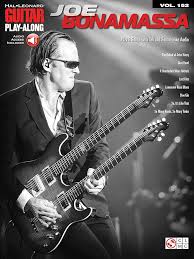 |
Guitar Play Along Vol. 152 Joe Bonamassa book with Audio MP3 Embedded Tracks With Tablature — Joe Bonamassa Guitar Play Along Volume 152 (sheet music and TAB) |
| Guitar Play Along Vol. 175 Michael Schenker book with Audio MP3 Embedded Tracks With Tablature |
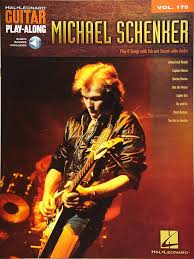 |
Guitar Play Along Vol. 175 Michael Schenker book with Audio MP3 Embedded Tracks With Tablature |
| Guitar Play Along Vol. 176 Eric Clapton and Blues Breakers John Mayall book with Audio MP3 Embedded Tracks With Tablature |
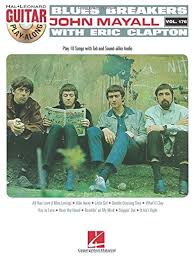 |
Guitar Play Along Vol. 176 Eric Clapton and Blues Breakers John Mayall book with Audio MP3 Embedded Tracks With Tablature |
| Guitar Play Along Vol. 177 Albert King book with Audio MP3 Embedded Tracks With Tablature |
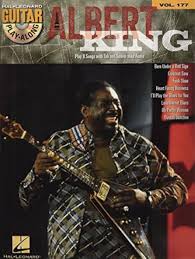 |
Guitar Play Along Vol. 177 Albert King book with Audio MP3 Embedded Tracks With Tablature |
| Guitar Play Along Vol. 195 Metallica book with Audio MP3 Embedded Tracks With Tablature |
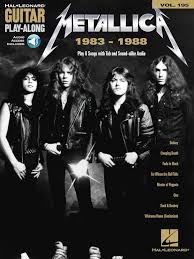 |
Guitar Play Along Vol. 195 Metallica 19831988 book with Audio MP3 Embedded Tracks With Tablature |
| Guitar Play Along Vol. 21 Yuletide Book with Audio MP3 Embedded Tracks With Tablature |
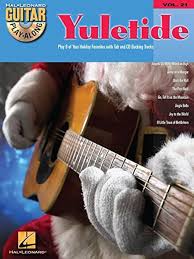 |
Guitar Play Along Vol. 21 Yuletide Book with Audio MP3 Embedded Tracks With Tablature |
| Guitar Play Along Vol. 28 Greg Koch with Tablature Book + MP3 Audio Play Along (embedded) |
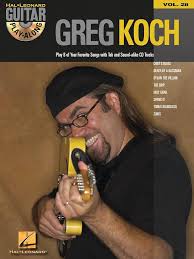 |
Guitar Play-Along Vol. 28 – Greg Koch |
| Guitar Play Along Vol. 30 Kiss Book with Audio MP3 Embedded Tracks With Tablature |
 |
Kiss – Guitar TAB Play Along Volume 30 |
| Guitar Play Along Vol. 34 Classic Rock With Audio Mp3 with TABLATURE |
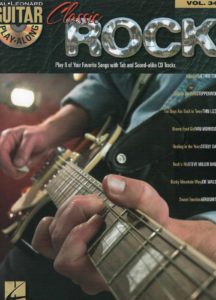 |
Guitar Play Along Vol. 34 Classic Rock With Audio Mp3_compressed |
| Guitar Play Along Vol. 37 Acoustic Unplugged Book with Audio MP3 Embedded Tracks With Tablature |
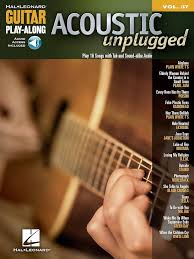 |
Guitar Play Along Vol. 37 Acoustic Unplugged Book with Audio MP3 Embedded Tracks With Tablature |
| Guitar Play Along Vol. 38 Blues Book with Audio MP3 Embedded Tracks With Tablature |
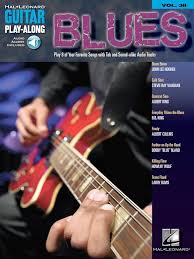 |
Guitar Play Along Vol. 38 Blues Book with Audio MP3 Embedded Tracks With Tablature |
| Guitar Play Along Vol. 42 2000s Rock Book with Audio MP3 Embedded Tracks With Tablature |
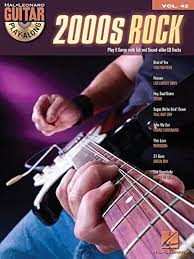 |
Guitar Play Along Vol. 42 2000s Rock Book with Audio MP3 Embedded Tracks With Tablature |
| Guitar Play Along Vol. 44 Jazz Greats Book with Audio MP3 Embedded Tracks With Tablature |
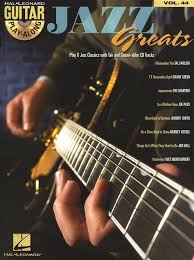 |
Guitar Play Along Vol. 44 Jazz Greats Book with Audio MP3 Embedded Tracks With Tablature |
| Guitar Play Along Vol. 45 TV Themes Book with Audio MP3 Embedded Tracks With Tablature |
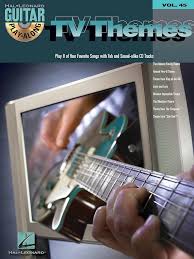 |
Guitar Play Along Vol. 45 TV Themes Book with Audio MP3 Embedded Tracks With Tablature |
| Guitar Play Along Vol. 46 Rock Mainstream Book with Audio MP3 Embedded Tracks With Tablature |
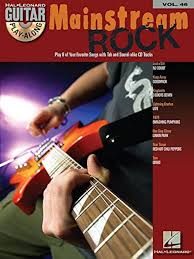 |
Guitar Play Along Vol. 46 Rock Mainstream Book with Audio MP3 Embedded Tracks With Tablature |
| Guitar Play Along Vol. 49 Stevie Ray Vaughan Book with Audio MP3 Embedded Tracks With Tablature |
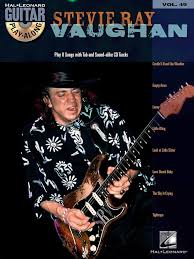 |
Guitar Play Along Vol. 49 Stevie Ray Vaughan Book with Audio MP3 Embedded Tracks With Tablature |
| Guitar Play Along Vol. 50 Van Halen 1978 1984 Book with Audio MP3 Embedded Tracks With Tablature |
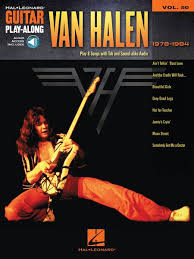 |
Guitar Play Along Vol. 50 Van Halen 1978 1984 Book with Audio MP3 Embedded Tracks With Tablature |
| Guitar Play Along Vol. 57 Guns N Roses Book with Audio MP3 Embedded Tracks With Tablature |
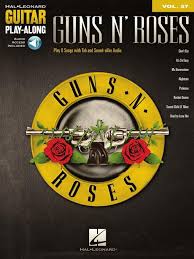 |
Guitar Play Along Vol. 57 Guns N Roses Book with Audio MP3 Embedded Tracks With Tablature |
| Guitar Play Along Vol. 59 Chet Atkins Book with Audio MP3 Embedded Tracks With Tablature |
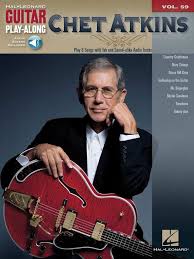 |
Guitar Play Along Vol. 59 Chet Atkins Book with Audio MP3 Embedded Tracks With Tablature |
| Guitar Play Along Vol. 6 Slipknot Book with Audio MP3 Embedded Tracks With Tablature |
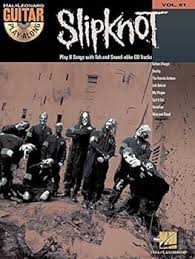 |
Guitar Play Along Vol. 6 Slipknot Book with Audio MP3 Embedded Tracks With Tablature |
| Guitar Play Along Vol. 63 Creedence Clearwater Revival Book with Audio MP3 Embedded Tracks With Tablature |
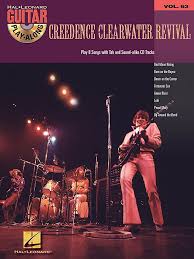 |
Guitar Play Along Vol. 63 Creedence Clearwater Revival Book with Audio MP3 Embedded Tracks With Tablature |
| Guitar Play Along Vol. 65 The Doors Book with Audio MP3 Embedded Tracks With Tablature |
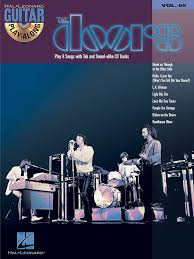 |
Guitar Play Along Vol. 65 The Doors Book with Audio MP3 Embedded Tracks With Tablature |
| Guitar Play Along Vol. 73 Bluesy Rock Book with Audio MP3 Embedded Tracks With Tablature |
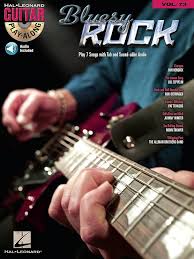 |
Guitar Play Along Vol. 73 Bluesy Rock Book with Audio MP3 Embedded Tracks With Tablature |
| Guitar Play Along Vol. 81 Rock Anthology Book with Audio MP3 Embedded Tracks With Tablature |
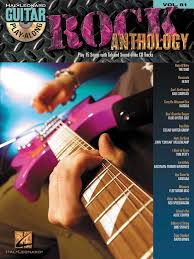 |
Guitar Play Along Vol. 81 Rock Anthology Book with Audio MP3 Embedded Tracks With Tablature |
| Guitar Play Along Vol. 86 Boston Book with Audio MP3 Embedded Tracks With Tablature |
 |
Guitar Play Along Vol. 86 Boston Book with Audio MP3 Embedded Tracks With Tablature |
| Guitar Play Along Vol. 87 Acoustic Women Book with Audio MP3 Embedded Tracks With Tablature |
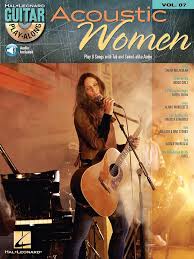 |
Guitar Play Along Vol. 87 Acoustic Women Book with Audio MP3 Embedded Tracks With Tablature |
| Guitar Play Along Vol. 88 Grunge Book with Audio MP3 Embedded Tracks With Tablature |
 |
Guitar Play Along Vol. 88 Grunge Book with Audio MP3 Embedded Tracks With Tablature |
| Guitar Play Along Vol. 89 Reggae Book with Audio MP3 Embedded Tracks With Tablature |
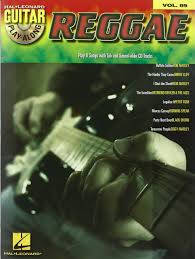 |
Guitar Play Along Vol. 89 Reggae Book with Audio MP3 Embedded Tracks With Tablature |
| Guitar Play Along Vol. 93 Rock Instrumentals Book with Audio MP3 Embedded Tracks With Tablature |
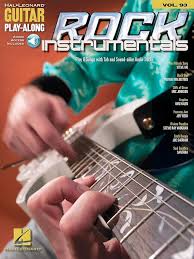 |
Guitar Play Along Vol. 93 Rock Instrumentals Book with Audio MP3 Embedded Tracks With Tablature |
| Guitar Play Along Vol. 94 Slow Blues with Audio MP3 Embedded Tracks With Tablature |
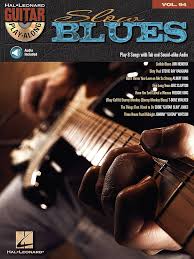 |
Guitar Play Along Vol. 94 Slow Blues with Audio MP3 Embedded Tracks With Tablature |
| Guitar Play Along Vol. 99 ZZ Top Book with Audio MP3 Embedded Tracks With Tablature |
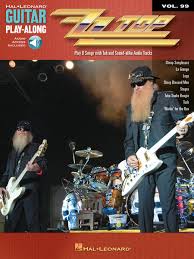 |
Guitar Play Along Vol. 99 ZZ Top Book with Audio MP3 Embedded Tracks With Tablature |
| Guitar Play Along Volume 28 – Greg Koch with MP3 audio tracks with Tablature |
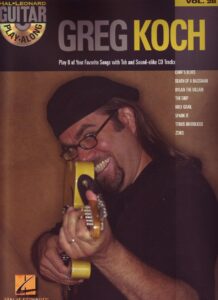 |
Guitar Play Along Volume 28 – Greg Koch with MP3 audio tracks |
| Guitar Play Along Volume 3 – Hard Rock With Embedded Mp3 Audio Tracks with Tablature |
 |
Guitar Play Along Volume 3 – Hard Rock With Embedded Mp3 Audio Tracks |
| Guitar Play Along Volume 47 – Jimi Hendrix Experience Smash Hits With Mp3 Audio and TAB |
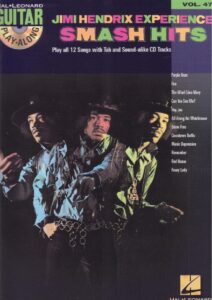 |
Guitar Play-Along Volume 47 – Jimi Hendrix Experience Smash Hits |
| Guitar Play Along Volume 98 – Rock Band (Classic Rock Edition) With Mp3 Audio Tracks with TABLATURE |
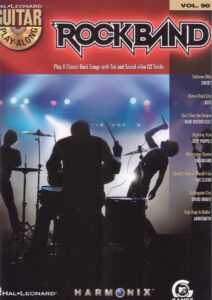 |
Guitar Play-Along Volume 98 – Rock Band (Classic Rock Edition) |
| Guitar Play-Along Vol. 16 – Jazz with MP3 audio tracks with Tablature |
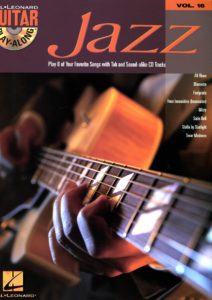 |
Guitar Play Along vol 16 with MP3 |
| Guitar Play-Along Vol. 2 – Acoustic WITH AUDIO MP3 with Tablature |
 |
Guitar Play Along Volume 2 Acoustic (With Embedded Audio Mp3) |
| Guitar Play-Along Vol. 24 Eric Clapton (pdf book wirth embedded MP3 tracks play along) Guitar Tablature |
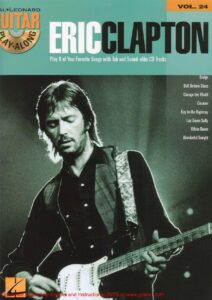 |
Guitar Play-Along Vol. 24 Eric Clapton (pdf book wirth embedded MP3 tracks play along) Guitar Tablature |
| Guitar Play-Along Volume 19 – Soul with audio MP3 embedded in the PDF with Tablature |
 |
Guitar Play-Along Volume 19 – Soul |
| Guitar Play-Along Volume 48 – Aerosmith Classics with MP3 audio tracks with TABLATURE |
 |
Guitar Play-Along Volume 48 – Aerosmith Classics with MP3 audio tracks |
| Guitar Play-Along Volume 82 – Easy Rock Songs with audio Mp3 with Tablature |
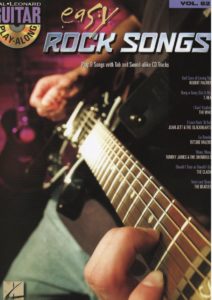 |
Guitar Play-Along Vol. 82 – Easy Rock Songs |
| Guitar Player Django Reinhardt – A Lesson in Gypsy Jazz | Guitar Player Django Reinhardt – A Lesson in Gypsy Jazz | |
| Guitar Rhythm And Technique For Dummies |
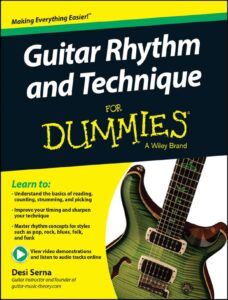 |
|
| Guitar Scales (Complete Diagrama of) |
 |
|
| Guitar Scales Complete A Guide To Playing And Using Scales On Guitar And Mastering The Fretboard with TABs (Randy Mcgravey) |
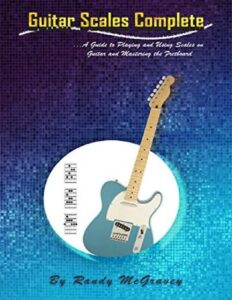 |
|
| Guitar Series Repertoire and Studies (6) |
 |
Guitar series repertoire |
| Guitar Signature Licks Best Of R&B R and B Book with Audio MP3 Embedded Tracks With Tablature |
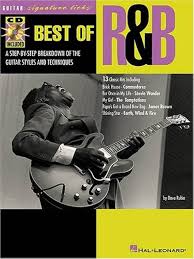 |
Guitar Signature Licks Best Of R&B R and B Book with Audio MP3 Embedded Tracks With Tablature |
| Guitar Signature Licks The Best of Soul Guitar with Tablature Book + MP3 Audio Play Along (embedded) |
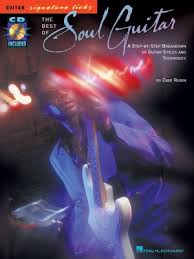 |
Guitar Signature Licks The Best of Soul Guitar with Tablature Book + MP3 Audio Play Along (embedded) |
| Guitar Signature Licks The Essential Albert King Book with Audio MP3 Embedded Tracks With Tablature |
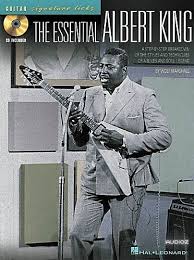 |
Guitar Signature Licks The Essential Albert King Book with Audio MP3 Embedded Tracks With Tablature |
| Guitar Signature Licks – Guns N Roses The Best Of Book + Audio Mp3 Tracks To Play Along |
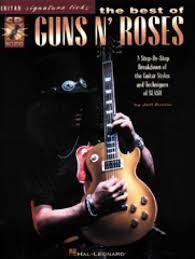 |
Guitar Signature Licks – Guns N Roses The Best Of Book + Audio Mp3 Tracks To Play Along |
| Guitar Signature Licks – Southern Rock Best Of Book + Audio Mp3 Tracks To Play Along |
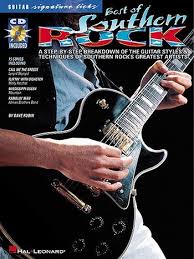 |
Guitar Signature Licks – Southern Rock Best Of Book + Audio Mp3 Tracks To Play Along |
| Guitar Solos From The Romantic Era By Laurindo Almeida |
 |
Guitar Solos From The Romantic Era By Laurindo Almeida |
| Guitar Tab Method Book 1 with CD Audio MP3 Play Along |
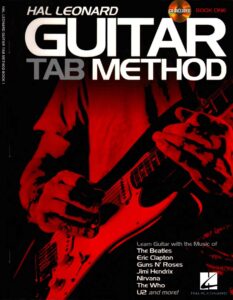 |
Guitar Tab Method Book 1 with CD Audio MP3 Play Along |
| Guitar Tab Method Book 2 with CD Audio MP3 |
 |
Hal Leonard guitar tab |
| Guitar Tab Method Book 3 with Audio MP3 Play Along |
 |
Guitar Tab Method Book 3 with Audio MP3 Play Along |
| Guitar Training Jazz Bossa Nova Guitar |
 |
Guitar Training Jazz Bossa Nova Guitar |
| Guitar World’s 100 Greatest Guitar Solos Of All Time |
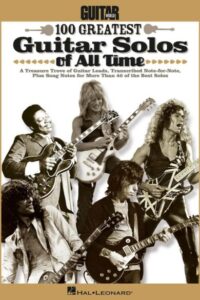 |
Guitar World’s 100 Greatest Guitar Solos Of All Time |
| Guitar, Frederick Noad First Book For |
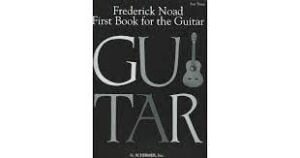 |
|
| Guitare – Méthode Pour Apprendre À Jouer De La Guitare |
 |
|
| Guitare Facile – La Méthode Complète |
 |
Guitare Facile – La Méthode Complète |
| Guitarist Chord Book, The By Peter Vogl Over 900 Chords Diagrams |
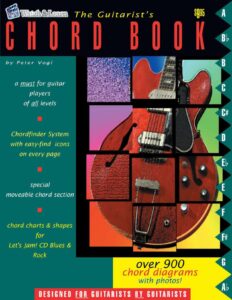 |
|
| Guitarra Método Completo Para Aprender A Tocar Guitarra (Español – Spanish) |
 |
|
| Guitarra Recull Compositors Catalans S. XX – Guitar Catalan Composer of 20th Cent. |
 |
|
| Guitarra Flamenca Curso De (De Manuel Granados) Book + Audio Mp3 (Español – Spanish) |
 |
|
| Guitarra Flamenca – Manolo Sanlucar – Volume 2 with MP3 audio tracks |
 |
Guitarra Flamenca – Manolo Sanlucar – Volume 2 with MP3 audio tracks |
| Guitarreando – Album De Piezas Musicales Para Guitarra (Guitar) 14 Canciones Musicalizadas Por Pintos Avila |
 |
Guitarreando – Album De Piezas Musicales Para Guitarra (Guitar) 14 Canciones Musicalizadas Por Pintos Avila |
| Guitars For Christmas (20 Christmas carols for one or two guitars) |
 |
Guitars For Christmas (20 Christmas carols for one or two guitars) |
| Gunbuster Fantasy For Piano |
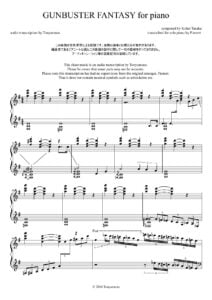 |
|
| Guns N Roses – 14 Years | ||
| Guns N Roses – Dont Cry | ||
| Guns N Roses – Knockin On Heavens Door | ||
| Guns N Roses – November Rain | ||
| Guns N Roses – Sweet Child O Mine | ||
| Guns N Roses Lies |
 |
 |
| Guns N Roses Use Your Illusions Piano & Guitar Songbook |
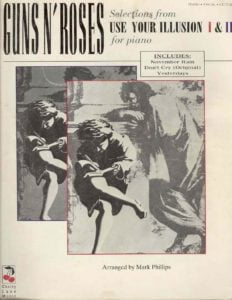 |
Guns N Roses Use Your Illusions Piano & Guitar Songbook |
| Gunther Schuller A Life In Pursuit Of Music And Beauty (Schuller Gunther) Book |
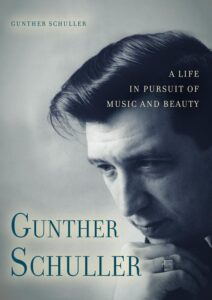 |
|
| Gunther Schuller Early Jazz Its Roots And Musical Development Book |
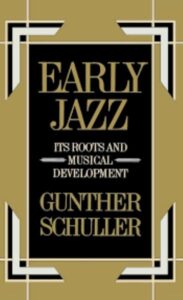 |
|
| Gunther Schuller Journey Into Jazz |
 |
|
| Gurdjieff and Music (Book) by Johanna J.M. Petsche |
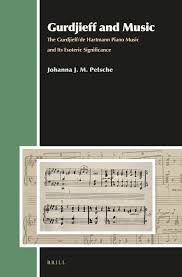 |
|
| Gurdjieff Hartmann Music for the Piano Vol. 1 Asian songs and rythms |
 |
Gurdjieff-HArtmann Music for the Piano sheet music |
| Gurdjieff Hartmann Music For The Piano Vol. 2 Music Of The Sayyids And The Dervishes |
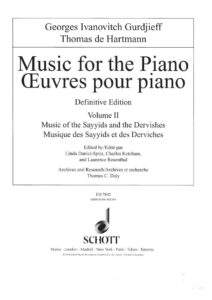 |
Gurdjieff Hartmann Music For The Piano Vol. 2 Music Of The Sayyids And The Dervishes Contents |
| Gurdjieff Hartmann Music for the Piano Vol. 3 Hymns, Prayers and Rituals (complete 3 series) |
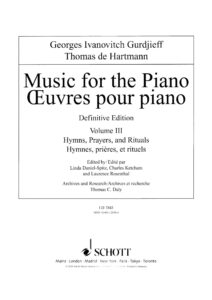 |
Gurdjieff – Thomas de Hartmann Music for the Piano Vol. 3 Hymns, Prayers and Rituals (complete 3 series) |
| Gurlitt – Album leaves for the Young, op 101 | Gurlitt etudes | |
| Gurlitt – Easiest Studies in Velocity, op 83 | Gurlitt etudes op 83 | |
| Gurlitt – School of Velocity, op 141 | Gurlitt op 141 | |
| Gurlitt, Cornelius – Piano works Clavierunterichts Werke |
 |
|
| Gustav Holst – The Planets Iv. Jupiter The Bringer Of Jollity (Musescore File).mscz | ||
| Gustav Mahler by Bruno Walter (Book) |
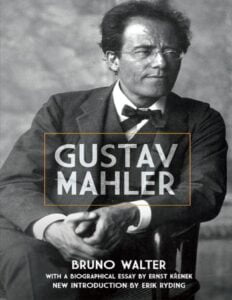 |
|
| Guthrie Govan – Creative Guitar 1 – Cutting-Edge Techniques (Guitar Book + CD) |
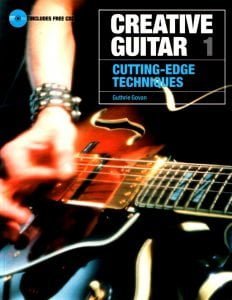 |
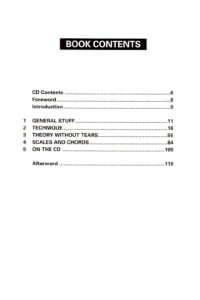 |
| Guthrie Govan – Creative Guitar 2 – Advanced Techniques [PDF + AUDIO MP3] |
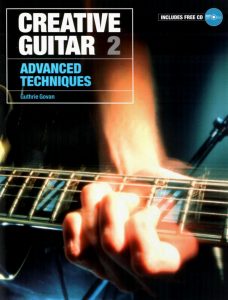 |
Guthrie Govan – Creative Guitar 2 – Advanced Techniques |
